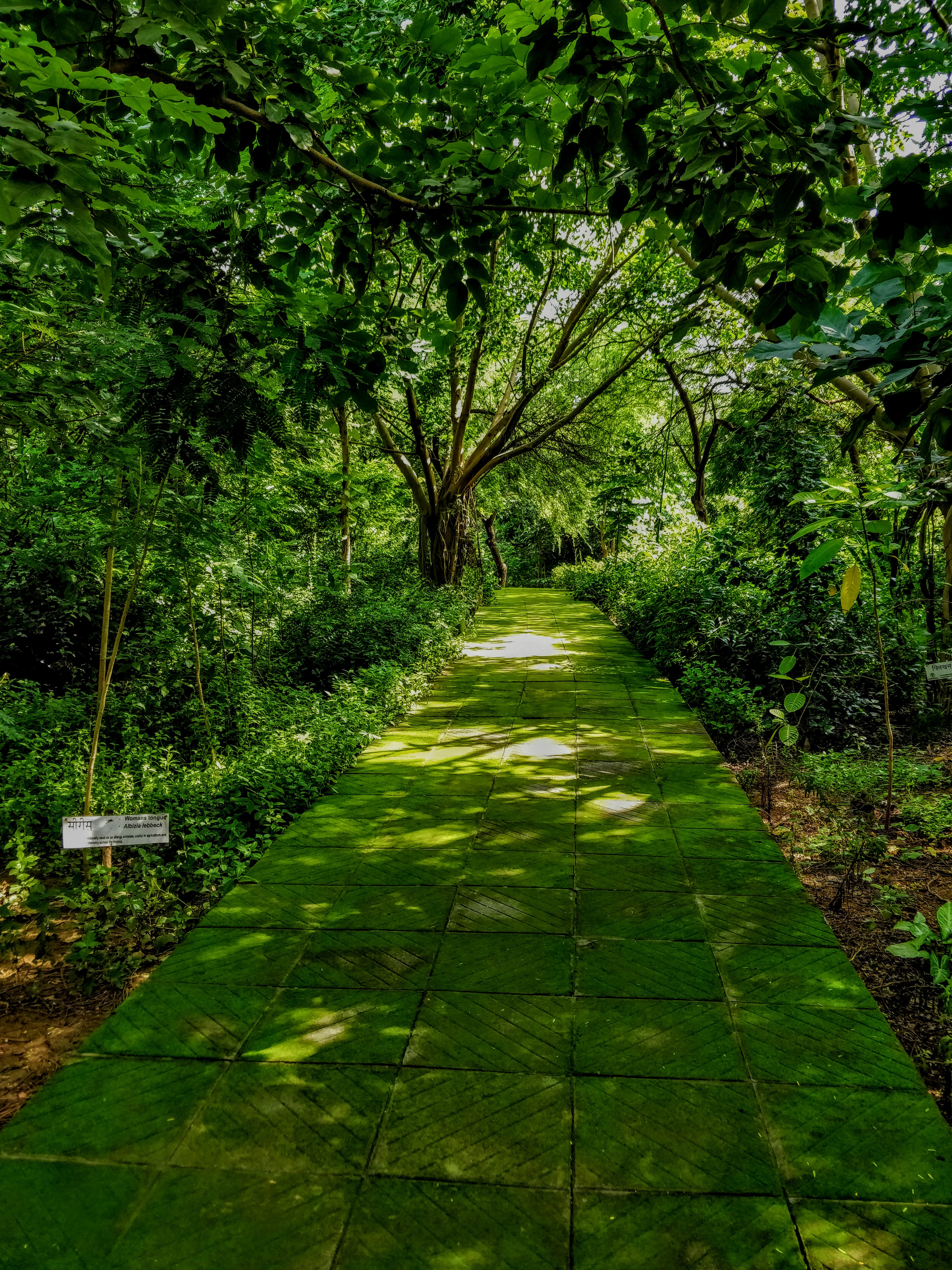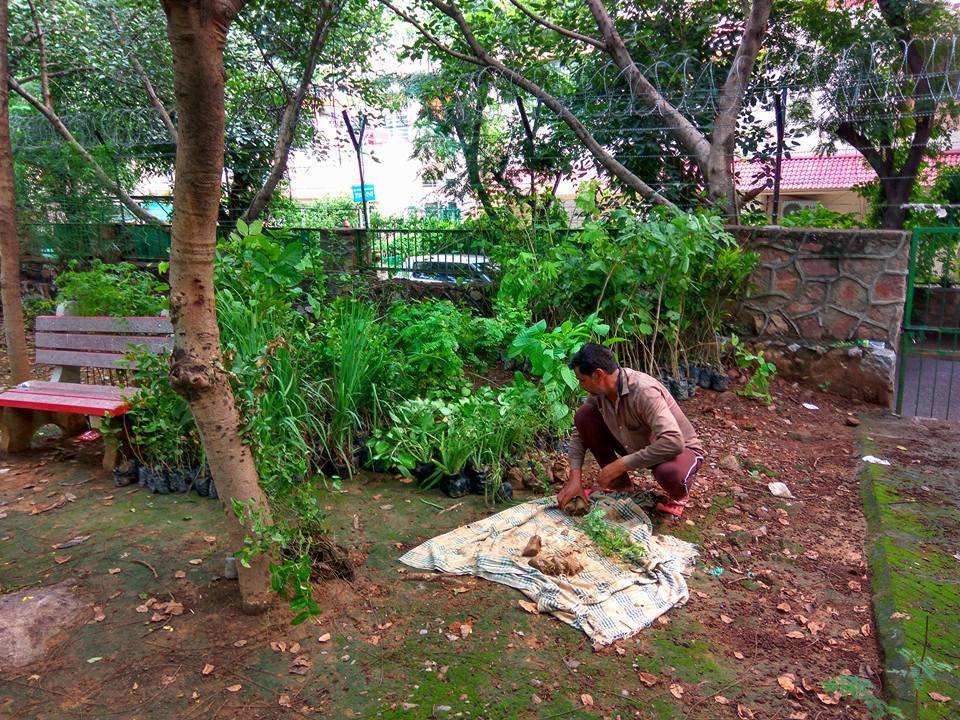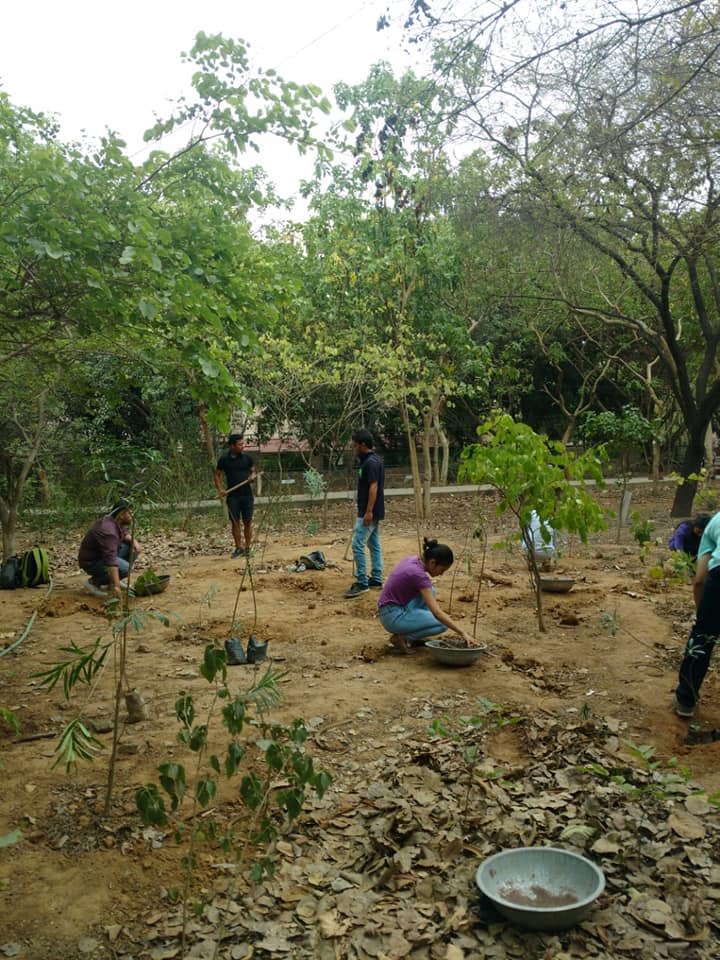Abandoned Park to Lush ‘Airlung’: Here’s How You Can Build One For Your City!
City-based environmentalist, Vimlendu Jha, and his team, Swechha India, turned a neglected piece of land into a mini-forest over a period of ten years

Spread across a four-acre stretch in Vasant Kunj, Delhi, what is now known as the Airshed Park was once an abandoned and deserted piece of land with a green cover as low as five per cent.
Turn your home into “airlungs” by turning your balcony and nooks and corners of your home into mini-gardens. Check out The Better India Shop for your gardening goodies.
But today, if you were to see the satellite images of this very piece land on Google Maps, you’d be amazed.

With more than 95 per cent green cover, it is a lush green mini-forest which is home to more than 300 species of flora in the range of 10,000 native fruit-bearing trees, herbs, shrubs, host and nectar plants, air detox plants as well as vegetables!
City-based environmentalist, Vimlendu Jha, and his team, Swechha India, turned this neglected piece of land into a mini-forest over a period of ten years. Read more about their story here.
And in a bid to make available the knowledge of how the team reclaimed this public park and transformed it into green lungs for the city infamous for its noxious air-quality, The Better India (TBI) spoke to Jha at length.
In this interview, the environmentalist takes us step by step through the process of how you can mobilise your community to reclaim such forgotten patches in your own city and turn them into airsheds that not only boost green cover, but also recharge groundwater tables and improve air quality.
One of the first steps that Jha highlights is claiming ownership over public spaces.

“Reclaim public spaces. Often the parks in our own neighbourhoods run by the government are dilapidated in nature due to being short-staffed or for the lack of funds. And often, as citizens, we wash our hands off saying the maintenance of the park is the responsibility of the government. So the first step is to change that thought process and reclaim our rights over what belongs to us—the public.”
Understand the existing ecosystem

The next step is to analyse the park and do a careful study on its natural ecosystem. Some questions that need consideration include:
How big is the land?
What is the kind of labour required?
What is the quality of the soil?
What are the native varieties that exist and thrive on that land?
What is the quality of water? What is its availability?
What is the maintenance infrastructure like?
Planting is not rocket science

Stick to growing native species but maintain a variety within them. Jha adds how the objective is not to take up large-scale plantation but do the work in batches and ensure that the plants survive.
When they started reviving the park at Vasant Kunj, they started with a batch of 100 plants. These were protected, nurtured and monitored over a period of time before another batch was added.
Every batch had lessons that the team took away and put to use while adding a new batch of plants. And while it took them almost 10 years, Jha maintains that a park can be revived in a period of three years too, if more people join hands and resources are pooled in.
At the airshed park in Vasant Kunj, the team not only planted native fruit-bearing varieties but also added herbs, shrubs, detox, and air-purifying plants. Some of the trees include orchid, burflower, black mulberry, sacred fig, sausage tree, Indian gooseberry, banyan, guava, Gulmohar, pomegranate, jujube, etc.
Other shrubs and herbs (both medicinal and culinary) include holy basil, sweet basil, curry leaf, hibiscus, fountain grass, lemon grass, Indian asparagus, cinnamon basil, long pepper, turmeric, stevia, cardamom, etc.
The shade detox garden includes varieties like syngonium, spider plant, money plant, aloe vera, other indoor ferns, etc. Vegetables include sweet potatoes, bitter gourd, lady finger, aubergine, tomatoes, pumpkin, spinach, fenugreek, etc
You can do a detailed study of the park in your area to understand what varieties suit the ecosystem, climate, soil conditions and start plantation accordingly in stages.
Other sustainable practices:

To create a biodiverse system, the team also created a butterfly garden.
They also dug pits to capture rainwater and recharge the groundwater table. Similarly, following the principles of permaculture, they relied on nature and the waste she generates, for.e.g. dry leaves, twigs, foliage, etc. to create manure for the plants.
What is permaculture?
The team did not rely on any chemicals or unnatural resources to rejuvenate the park. They followed the principles of permaculture to create a self-sufficient ecosystem. This is to ensure that when the resuscitated park is returned to the government bodies, it can survive and regenerate on its own even in the absence of maintenance.
The term ‘Permaculture’ was coined by Bill Mollison in 1978. The word is a combination of permanent agriculture and permanent culture. The aim of Permaculture is to create systems that are ecologically sound, economically viable and self-sustaining. It is applicable in both rural and urban contexts and at any scale. Want to know how permaculture works? Read the story of this couple who used the technique to create a farm at the foothills of Morni Hills, Haryana. A farm that will live forever.
Make it a community space

Since what you are aiming for is a park and not a forest, ensure that there is enough space for children to play, elders to sit and enjoy the beauty of nature.
One of the techniques that Jha and his team adopted at Vasant Kunj was to create an open-nursery where people can walk in and collect flowers for free. They also planted their own kitchen garden where a number of vegetables and leafy greens are grown. The team also made a 400-metre long path for senior citizens and visitors to walk to pick their way through the verdant green space.
“Honestly, this is not rocket science. Even a small group of people can make it happen. Yes, the process can be labour-intensive and backbreaking at times, but the idea is to really involve an entire community and mobilise them to work together. If you find a good number of volunteers, this could be a fun Sunday activity to follow over a period of time.”
You May Also Like: 32 Years Without a Weekend Off: This Elephant Doctor Treats 700+ Jumbos Every Year!
Investment
Is it heavy on the pocket? Well, when you have a community with you, even pooling in 20,000 per month can help revive a four-acre park, says Jha.
This includes costs for preparation of land, ground cover, additional labour hired, and cost of materials, among others.
While you’ve understood the do’s of creating an airshed, Jha ends with a message on the ‘Don’ts’ of creating an airshed.
“Aim to create a sustainable green lung, do not run behind aesthetics. Modern-day parks heavily invest in garden hedges and artificial green cover, which are heavy on the pocket and have no ecological value, whatsoever. So, just keep your vibe natural and raw.”
The practical model that Jha and his team has created uses limited resources and community participation to convert small pieces of abandoned land into air sheds or air catchment areas in our cities and must be replicated everywhere.
(Edited by Saiqua Sultan)
Like this story? Or have something to share?
Write to us: [email protected]
Connect with us on Facebook and Twitter.
This story made me
- 97
- 121
- 89
- 167
Tell Us More
We bring stories straight from the heart of India, to inspire millions and create a wave of impact. Our positive movement is growing bigger everyday, and we would love for you to join it.
Please contribute whatever you can, every little penny helps our team in bringing you more stories that support dreams and spread hope.



















